Let's Talk About Barns, Baby
A behind the scenes peek at the barns (and their architecture) scattered across the Michigan countryside.
Let's be real... There are a wide variety of barns. We've shared a lot about these barns on Instagram and Facebook, but haven't really gotten into the specifics.
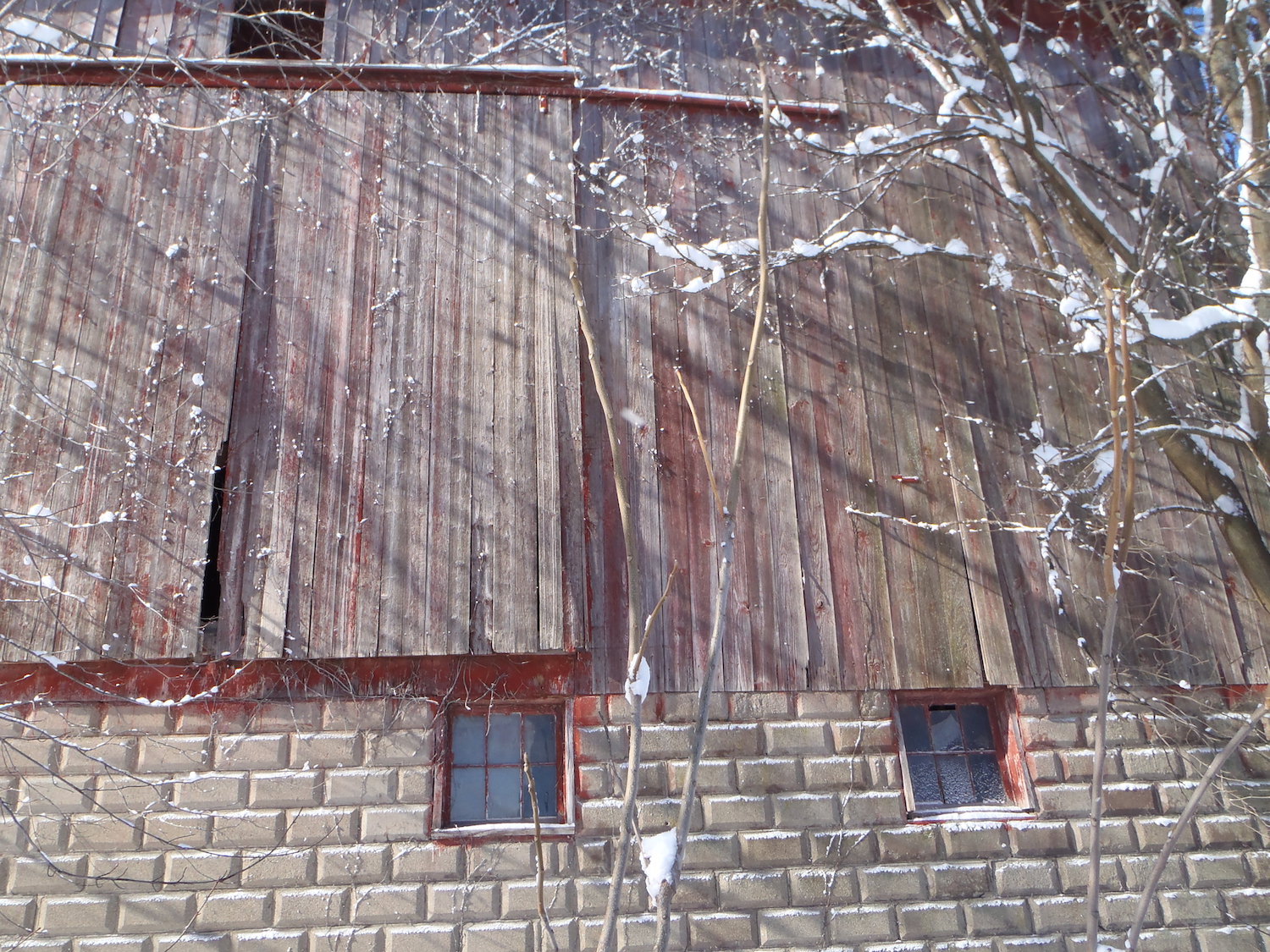
If you do a quick Google search of the different types of barns, you'll find a ton of different barns named after their roofline, geography, or functionality. Anyone who has talked to Jim (owner and founder of Michigan Reclaimed Barns and Lumber) knows that he can rattle off literally every detail about these barns, and even the lumber he has salvaged from those barns.
So, we sat down with Jim and picked his brain to get every piece of information he has on these barns. Let's get started!
Gable Rooflines
Gable barns are a classic design that you've probably seen if you've ever driven in the Midwest. You can easily spot these barns because they have a dual-pitched roof, with a triangular section underneat it. This style of barn, in particular, was quite popular because they are both customizable and easy to expand upon.
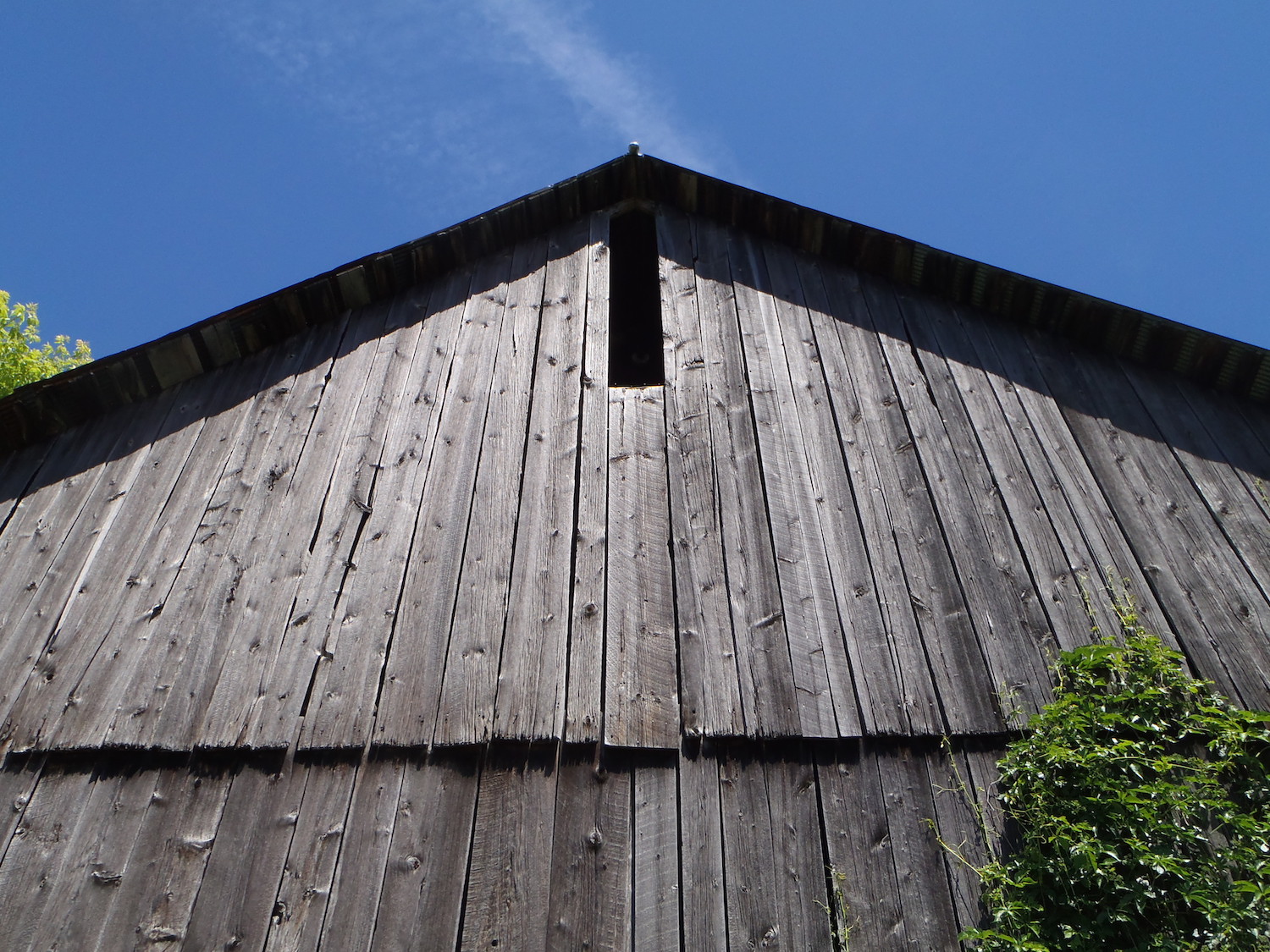
More often than not, this type of barn had a breezeway consisting of horse stalls, a tack shop, and storage space, likey with rafters above for hay and additional storage.
This barn (left) is an example of a barn we deconstructed and salvaged. Specifically, it is a horse barn that was once located in Alpena, Michigan.
Gambrel Rooflines
One neat fact about gambrel barns that not many people know is that they are modeled after European-style barns. These barns have symmetrical two-sided roofs, with two additional slopes on each side. And, sometimes, gambrel-roofed barns are reffered to as prairie barns.
There are also some old houses built with a gambrel roofline. This roofline is not nearly as common anymore, but you may see one or two of them scattered about thes tate, particular on streets and in neighborhoods with older, historic homes.
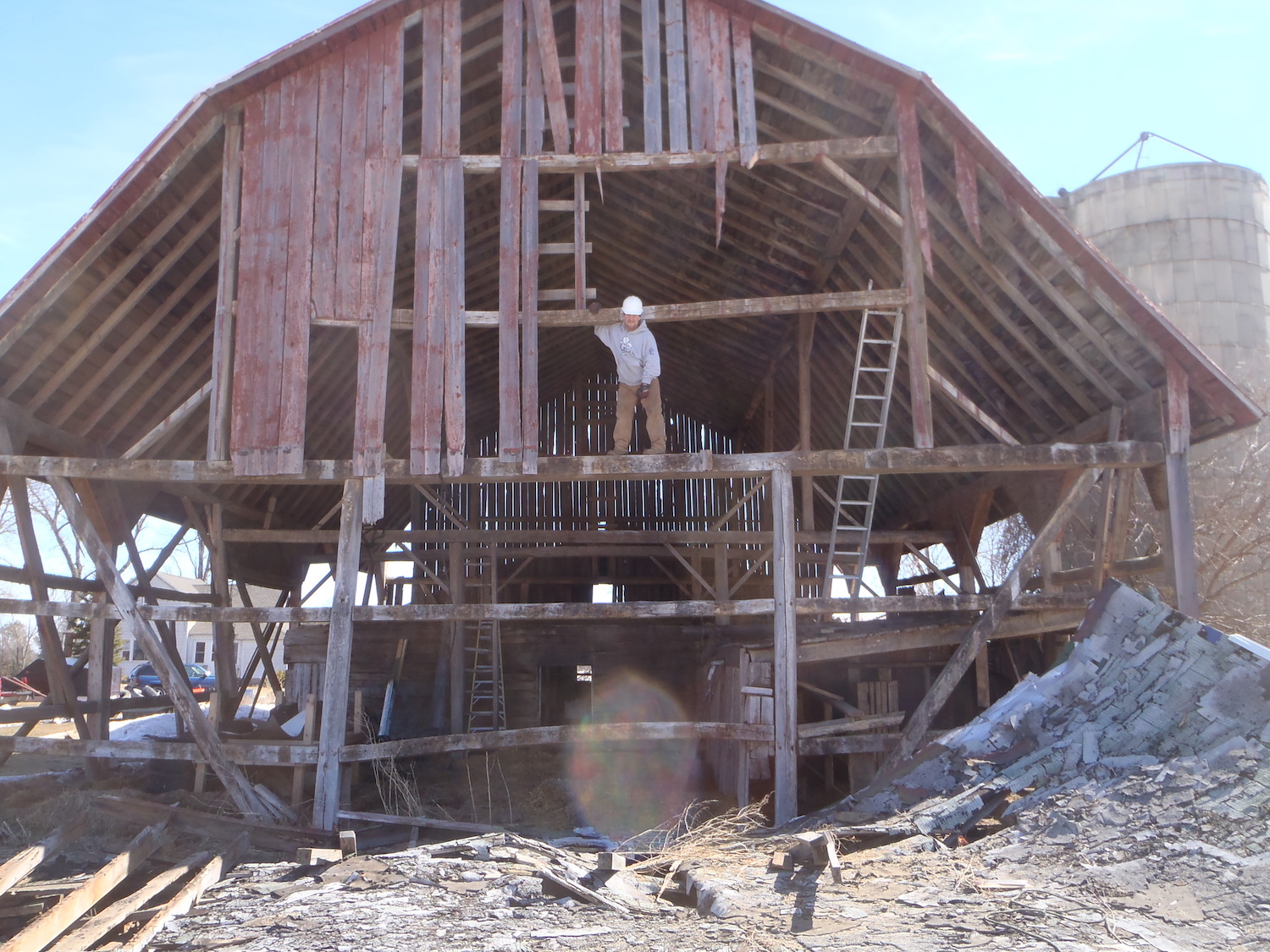
Although gambrel roofs are more extensive and involved, they do provide significantly more storage space in the barn's loft (which is always a plus). In barns housing animals, the lofts were often used for hay and feed, so the increased storage capacity would definitely be appealing for farmers.
The barn above is a gambrel-roofed barn. This one, in particular, was a dairy barn in Linwood, Michigan.
Gothic Rooflines
First and foremost, gothic-arched barns are quite unique, characterized by their ogival shaped roofline. And what the heck is an "ogival" shape? Well, it's arched.
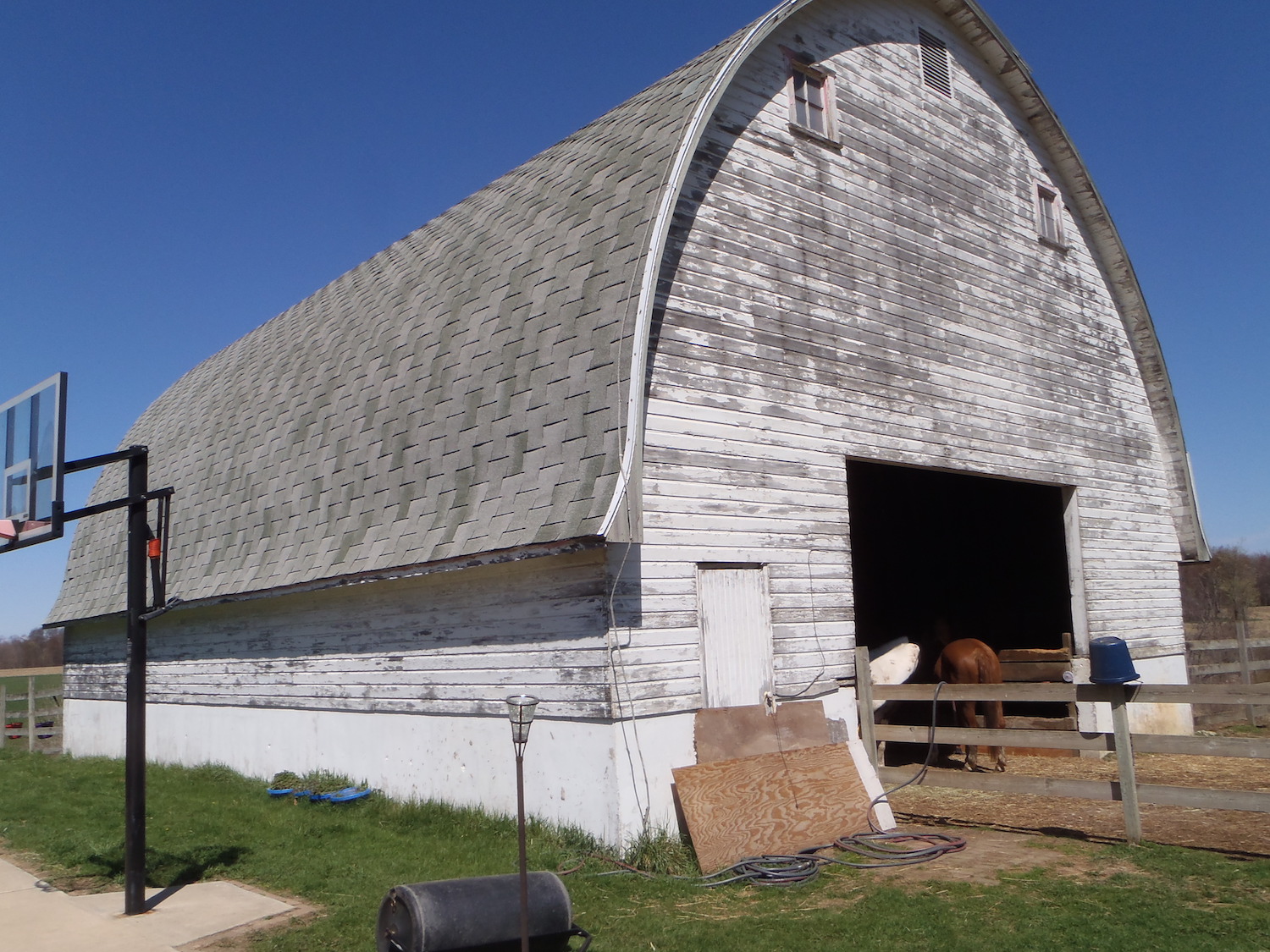
These rooflines have a center peak, just like the gable rooflines, but the rafters are curved instead of straight. The arches (or curved rafters) were actually cut from boards that had been nailed together. This rounded design allowed for a haymow (or storage space for hay) to span the entire length of the barn.
Gothic-arched rooflines became more popular in the 1930's as many farms began to transition from animal-powered to gasoline-powered machinery. According to an article written by A. W. Holt for American Builder in 1935, this style of barn was best suited to withstand strong winds and wind storms, due to its streamlined design.
The barn pictured to the right (and below) is a great example of a gothic-style barn. The team deconstructed and salvaged wood from this barn in East Leroy, Michigan a few years back.
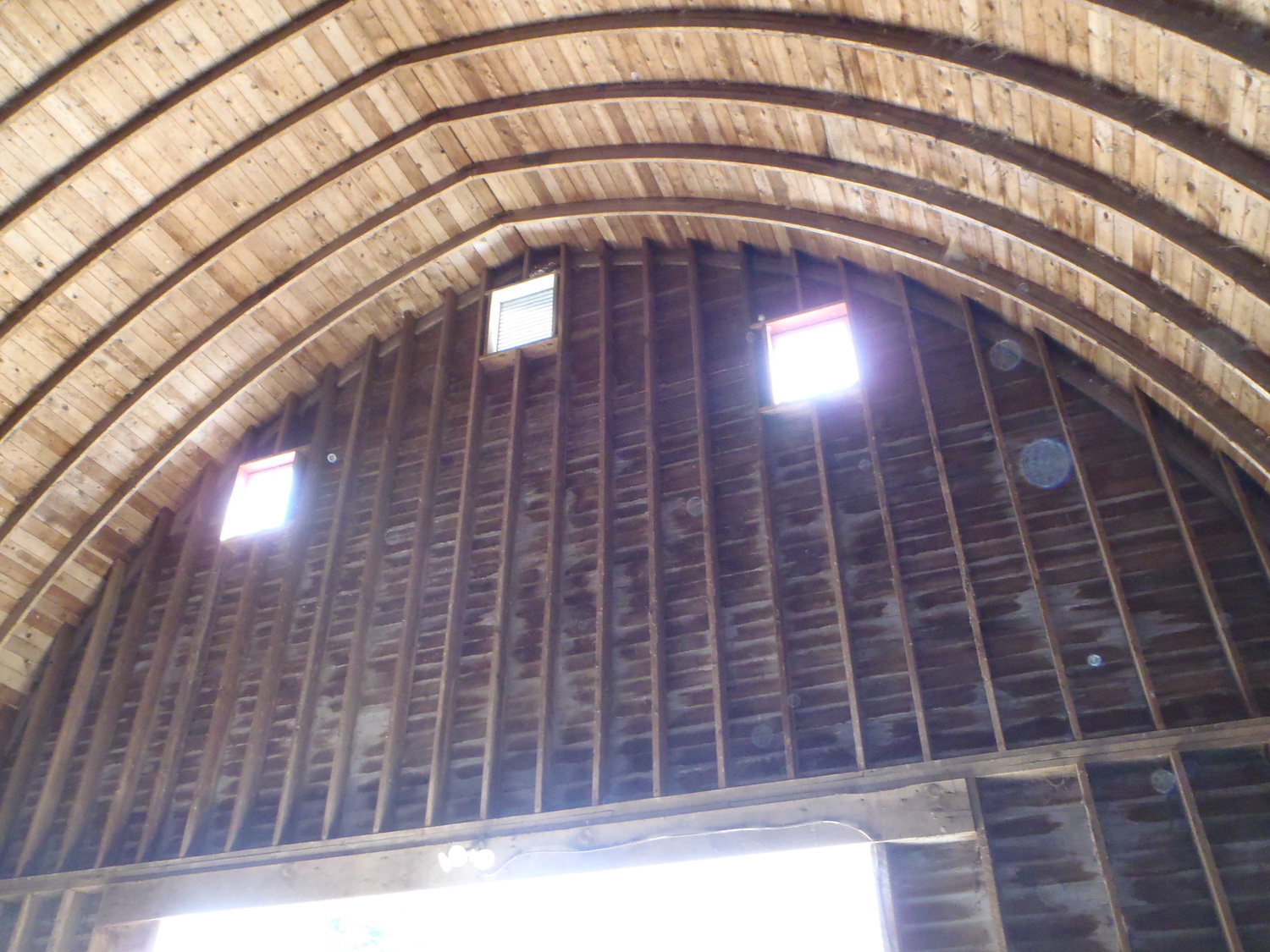
Not all barns are name for their rooflines, though. And... you can likely recognize some of these barns by sight, even if you don't know the official name.
Bank Barns
Have you ever seen a barn that looks like it was built into the side of a hill? Well, you may have guessed it. Those are bank barns or, depending on who you ask, a basement barn. Below are some pohtos of bank barns that were once standing strong right here in Michigan.
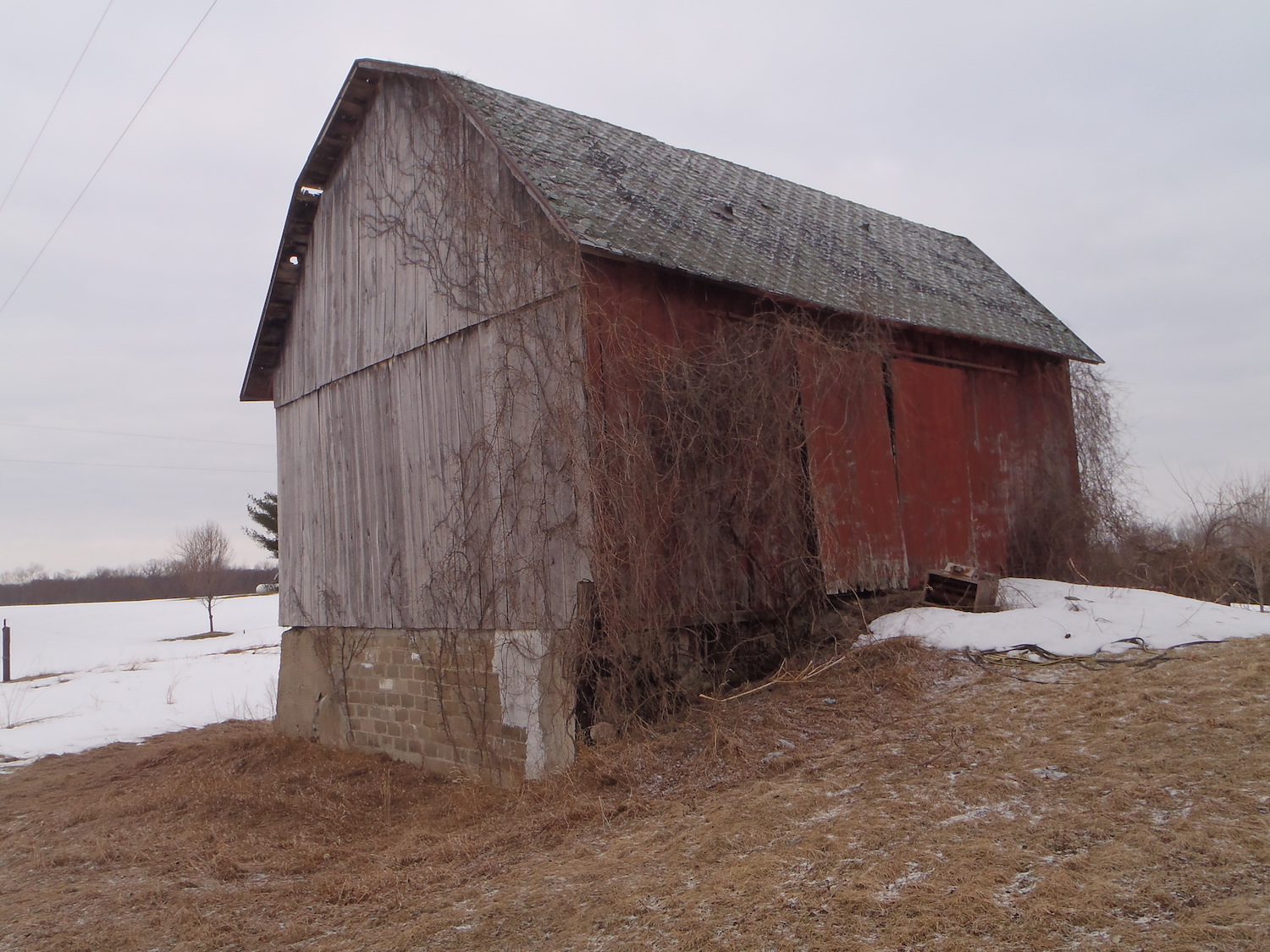
Bank barns are usually two-story structures that are accessible on both levels because they were built into a hill. It allowed farmers to drive equipment into the barn at the ground level which, if you've ever driven behind one of those massive tractors (or other farm equipment), you know that's a definite plus.
When settlers were first establishing themselves and their farms, they would typically build the barn first. So, in these bank barns, the farmer and their family would live in the lower level of the barn during the building process. And, once the barn was finished, they would begin constructing the farmhouse, usually a year (or three) later.
One interesting fact that Jim excitedly shared is a way to determine the age of a barn, especially when property records aren't necessairly the most accurate. Since there are significantly better records for houses than barns, just take a look at the year the farmhouse was built. So, if the house was built in say, 1930, it is safe to assume that the barn was built sometime between 1925 and 1930.
Last, but definitely not least... Many barns are named after their functionality. I'm talking dairy barns, horse barns, hay barns, and tobacco barns, to name a few. Each of these barns was built with characteristics that were best suited for their functionality.
Dairy barns had birthing rooms with a dirt floor. Horse barns had lofts aboe the stalls for hay and feed storage. And, when you think about it, both of those make perfect sense.
Dairy Barns
Michigan absolutely has its fair share of dairy barns scattered across the state. Some are still functional, but, of course, there are quite a few dilapidated barns, too.
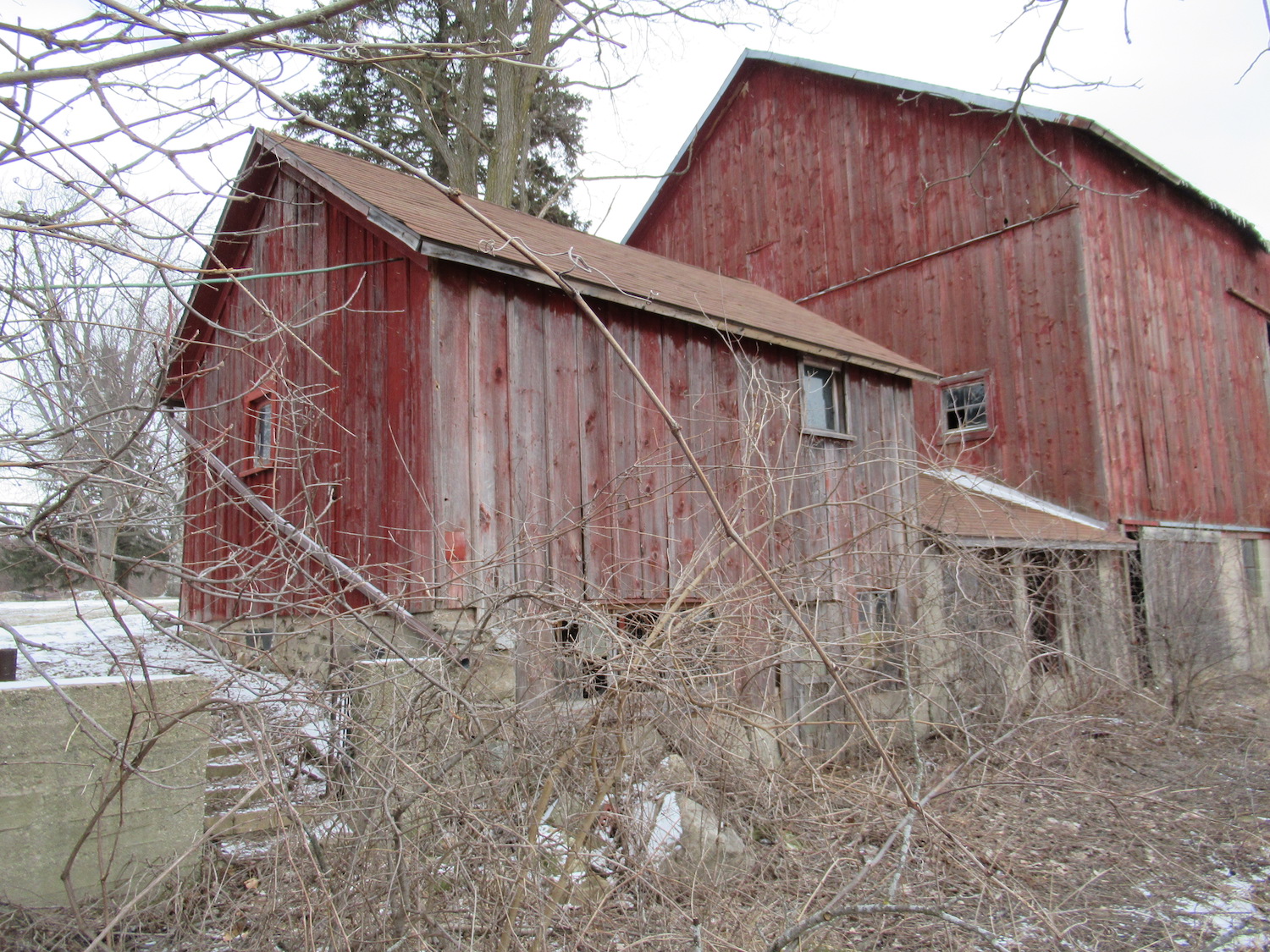
We've already mentioned that dairy banrs had a birthing room with a dirt floor. These birthing rooms were usually on the basement or lower level, and were constructed with two to three layers of boards to eliminate any air gaps. Why? Well, if a cow is giving birth in the middle of winter, the last thing you want is ice-cold air whipping through the birthing room and around the baby cow.
The rest of the barn typically had a concrete floor because it makes for an easier cleanup. And, if you've ever scooped up your dog's poo on a walk, I'm sure you can imagine how much larger a cow's is- let alone a barn-full of cows.
Horse Barns
Horse barns, as briefly mentioned above, typically had lofts above the stalls that were used for hay and feed storage. These barns also had a tack shop- a room specifically used for horse maintenance, like grooming, replacing shoes, etc. And, the ground floor of the barn was made up of dirt-floored stalls on either side of a center aisle.
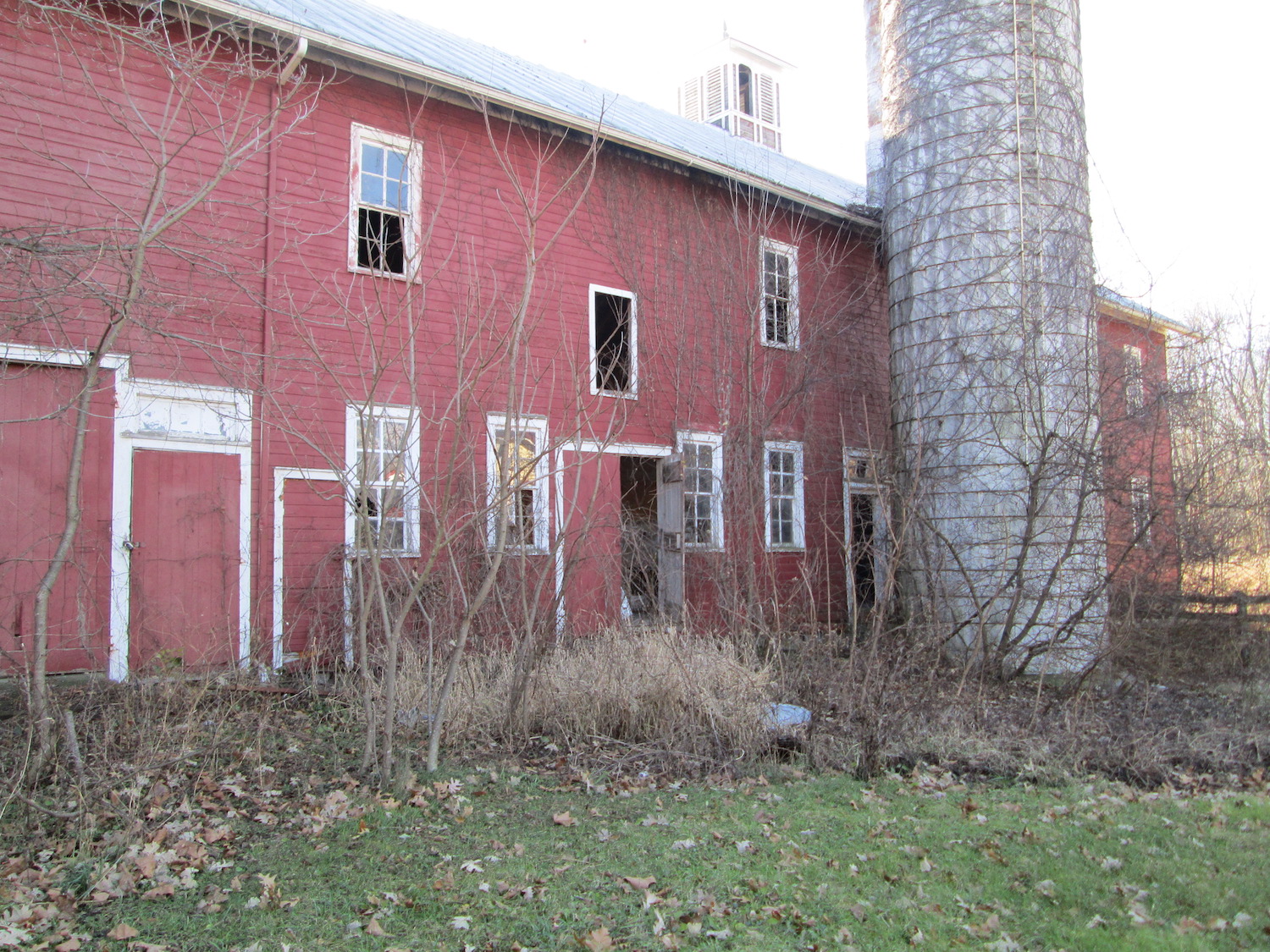
This barn (to the left) is an old horse barn that was once standing in Jackson, Michigan. You can also see the attached silo where additional feed was likely stored.
Final Thoughts
Jim is absolutely a wealth of knowledge when it comes to barns, reclaimed wood, and woodworking (in general).
Next time you're in to purchase reclaimed lumber, ask Jim what barn it came from. Not only will he remember what barn, but also can recount some of the barn's history and background.
If you have any more questions about barns, carpentry, woodworking, or reclaimed lumber, you should check out the brand new feature on our website- Ask Jim.
Here's what you need to know:
Have you ever had a question about reclaimed barn wood or woodworking or even about the tools to use on a particular project? And then... When you go to look for an answer online, you can't seem to find a simple answer (or one that actually answers your question).
Well, that's where Ask Jim comes into play.
Whatever question you have, ask it using the form on the Ask Jim page and, well, press submit. We will not be posting any names with these videos. Jim will answer a question (or so) every week and we will share the video right there on the Ask Jim page, plus on Facebook, Instagram, and YouTube. We will not be posting any names with these videos, so you can ask away without worrying that it's a "dumb question."